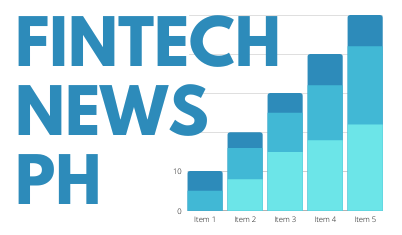by Leira Mananzan, Reporter
Imagine a government where every peso spent can be traced by any citizen in real time — fully accountable, tamper-proof, and transparently managed. That is the bold, ambitious vision behind the proposal to place the entire Philippine national budget on the blockchain.
Senator Bam Aquino recently introduced this idea as more than just another proposal; it’s a strategic blueprint that could elevate the Philippines to a global leadership role in fiscal transparency and digital governance — a potential game-changer for public trust and accountability.
From background to big picture
At the Manila Tech Summit, Senator Aquino put forward the groundbreaking concept of registering the national budget on the blockchain. He emphasized the technology’s immutable ledger as the foundation for ensuring that “every single step of the way will be logged and transparent to every single citizen”.

This proposal builds directly on existing momentum within the Department of Budget and Management (DBM). Already, the DBM’s Action Document Releasing System (ADRS) serves as a digital platform for releasing SAROs (Special Allotment Release Orders) and NCAs (Notices of Cash Allocation) across pilot agencies.
More recently, advances have been made through Project Marissa and integration with blockchain systems. Under Project Marissa, SAROs and NCAs are “minted” as NFTs on-chain to ensure integrity and prevent tampering. Meanwhile, a blockchain-based budget tracker using BayaniChain’s Lumen BaaS, tethered through the Prismo Protocol to DBM’s ADRS, feeds into the Polygon blockchain—making the documents immutable and publicly verifiable.
The stage, then, is set — not just for a pilot, but for a sweeping digital transformation of how government budget flows are recorded and made accessible.
The question now is: what are the advantages and challenges of scaling this architecture to the national budget level?
Pros of government blockchain payments

- Unprecedented transparency and public auditability — Blockchain’s immutable ledger ensures that once a transaction has been recorded, it can no longer be altered — thus, instilling public trust and preventing data tampering. Citizens gain the power to verify expenditures themselves, reducing gaps where corruption might thrive.
- Improved efficiency and reduced intermediaries — The decentralized architecture eliminates the need for paper-based approvals, multiple manual reconciliations, and intermediary oversight, streamlining procurement, document handling, and fund disbursement.
- Real-time financial visibility — If fully implemented, blockchain would enable real-time monitoring of budget flows — enabling citizens, watchdogs, and the media to follow funds from release to utilization, bolstering accountability and enabling rapid response to anomalies.
- Data integrity for high-risk transactions — High-risk transactions — like public procurement, aid distribution, and large fund transfers — carry heightened corruption risks. Blockchain provides a secure trail, reducing opportunities for manipulation at critical junctures.
- Enhanced privacy controls — DLT systems can integrate both public and private data layers. Through mechanisms like the Prismo Protocol, data can be selectively published—ensuring transparency while safeguarding sensitive information.
Cons and challenges of a blockchain budget
1. Scalability constraints — Government budgets would usually involve massive data volumes. Traditional blockchains often face throughput issues — limited blocks per second, and potential latency could hinder real-time processing.
2. Off-chain data management risks — It’s impractical to store all data on-chain. Coupling it with external systems (off-chain) introduces complexities — vulnerable to delays, misalignments, or breaches in data integrity.
3. High costs of technical requirements and implementation — Rolling out nationwide blockchain infrastructure demands robust technical staffing, cloud services, audit mechanisms, and ongoing SLA (such as 24/7 support) all of which carry significant operational expenses.
4. Regulatory and legal uncertainty — The shared ledger standards in governance are still at a nascent stage — regulations, data protection frameworks, privacy safeguards, and dispute protocols require firm grounding to avoid governance gaps.
5. Privacy and public perception — Public DLTs are transparent by nature. Without strong governance and “pseudonymization” protocols, sensitive information could be exposed — or the public could misinterpret transparency for intrusion.
Fiat vs. Blockchain: A balanced view

Fiat systems remain familiar, reliable, and legally established — but often opaque, inefficient, and prone to leakages. Blockchain systems — while disruptive — grant unprecedented transparency and auditability at scale.
In a mature hybrid model, foundational legal and fiat-based controls can co-exist with immutable ledger visibility — ensuring financial discipline while building a culture of digital transparency.
What could the future look like?
If passed into law, this proposal could place the Philippines at the forefront of open governance, with:
- A global benchmark for real-time, public monitoring of national budget flows.
- A new era of citizen trust, fueled by indisputable audit trails and instant verifiability.
- A transformative platform for inter-agency digital collaboration, fortified by data integrity embedded in blockchain layers.
- A stepping stone toward integrating smart contracts for conditional disbursement — enhancing automation and performance of public programs.
Summing up: Momentum meets ambition
With DBM’s pilot through ADRS, Project Marissa’s NFT minting, and the Polygon-based budget pipeline already underway, this isn’t just a distant dream — it’s evolution in action.
The next steps? Navigating scalability, legal frameworks, privacy safeguards, and technical maturity. But if implemented, the Philippines could pave a new path — transforming how governments manage public funds and setting a new gold standard for transparency and citizen-centric governance.
Blockchain may well be the digital ledger the nation needs to mend trust in public institutions. The proposal to place the entire national budget on-chain stands not just as an innovative idea — it’s a bold vision charting the future of Filipino governance.

